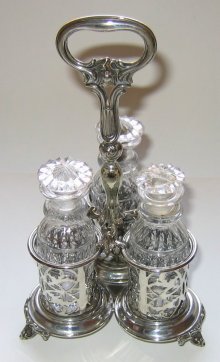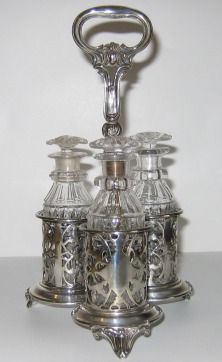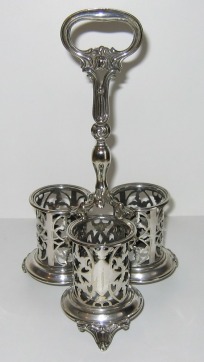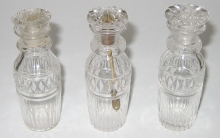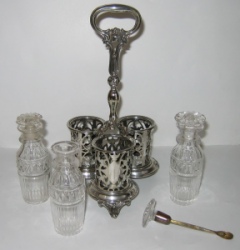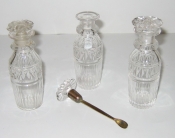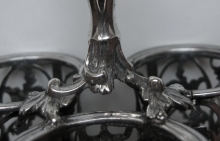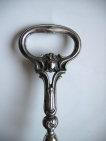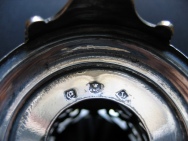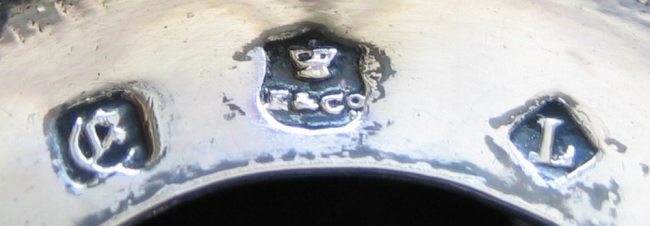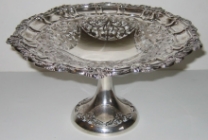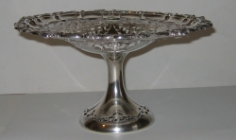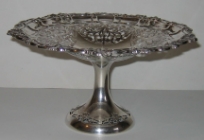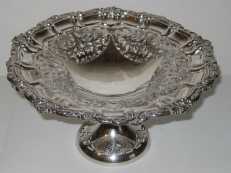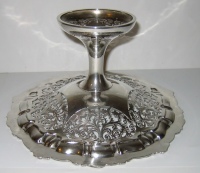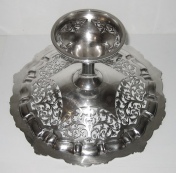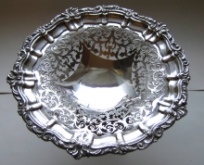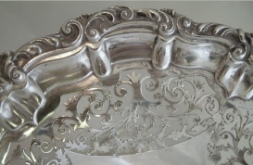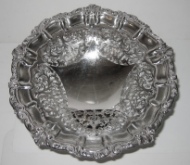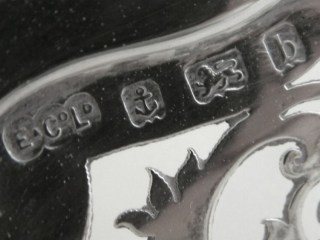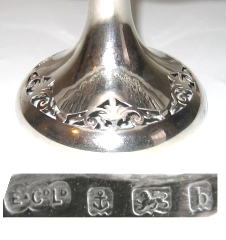 ASSOCIATION OF SMALL COLLECTORS OF ANTIQUE SILVER
ASSOCIATION OF SMALL COLLECTORS OF ANTIQUE SILVERASCAS
| Members' Window # 35 |
|
click on images to enlargeTWO ELKINGTON & Co. SILVER PIECESIn the pocket edition of Jackson Hallmarks (note 1)
Ian Pikford defines Elkington's production as "ranging from
the very ordinary to very important design; the quality is
always superb" (note 1) - Ian Pickford, 1991. Pocket Edition Jackson's Hallmarks: English, Scottish, Irish Silver and Gold Marks from 1300 to Present Day. Antiques Collector's Club, Woodbridge, Suffolk (UK).An early Victorian electroplated cruet set - Birmingham 1850The history of industrial silver electroplating is the history of Elkington & Co. since 1836 when this company of silversmiths was established in Birmingham.After the great improvement of the electrochemistry at the scientific level due to the works of Faraday, in 1838 Elkington & Co. patented the first industrial electroplating process and in 1840 production of silver electroplated wares was started. In a few years the majority of the plated silverware in Great Britain was produced with this new method and the "old Sheffield plating" technique became practically obsolete. As an example, an early Victorian electroplated ware, a cruet set bearing early trade and date letter marks of Elkington & Co. is presented on this page. Considering the date of this cruet (1850) it is contemporary with the cruet model presented with great success at the Great Exhibition held in London in 1851. The cruet consists of a silver plated stand, with three pierced foliate decoration bottle holders (with no monogrammed cartridges), and of three cut glass condiment bottles. The bottles were probably used for oil, vinegar and mustard. The mustard bottle has a brass (gilded?) mustard spoon device fixed to the glass stopper. The elegant baluster shape cast handle has a light foliate and rococo decoration. The body of the stand has three cast feet with the same light foliate and rococo decoration. The overall condition is very good, but one of the stoppers of the oil or vinegar bottle has a little crack and some chips. Some loss of plate underneath, but otherwise in pristine condition. Dimensions and weight: Stand: 22 cm tall and 12.5 cm across. Bottles: 10.5 cm tall and 3 cm of section at the base. Combined weight: 526 g; stand only 245 g. A late Victorian/Edwardian sterling silver compote - Birmingham 1901Alongside the celebrated work in silver plated wares, in which important designers like Christopher Dresser collaborated, Elkington & Co. produced high quality solid silverware.An example of late Victorian/Edwardian Elkingtons & Co. solid silver production is presented below. This fine and beautiful shaped circular silver compote or "tazza" manufactured by Elkington & Co. was hallmarked at the Assay Office of Birmingham in 1901. Its bowl has scroll and foliate cast border and is pierced with scrolling foliage around a plain, star shaped central reserve. The matching pierced base is not weighted and the stability is assured by the well proportioned shape and the high gauge of silver. The condition is excellent. Dimensions and weight: 13 cm tall and 25.5 cm of section. Weight: 544 g. |
Giovanni Ciceri -
www.argentinglesi.com
|
